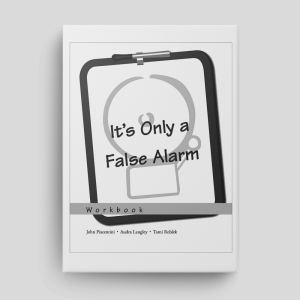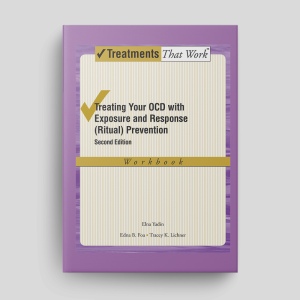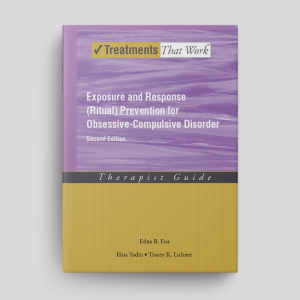Cognitive-Behavioral Treatment Of Childhood OCD - Therapist Gude
The Cognitive-Behavioral Treatment Of Childhood OCD therapist guide provides step-by-step instructions and evidence-based strategies for supporting children and young people experiencing obsessive compulsive disorder (OCD). A client workbook is downloadable separately.
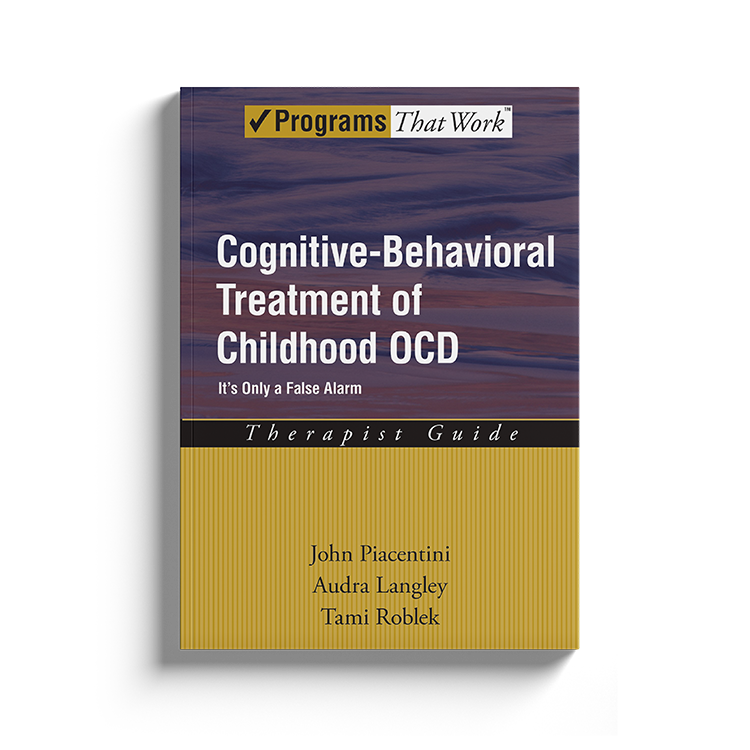
Download or send
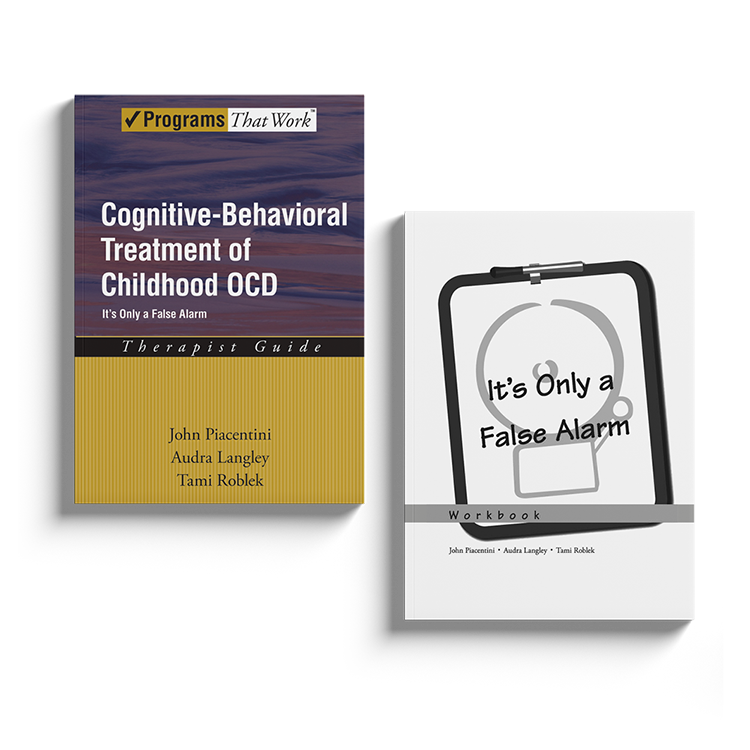
Overview
An estimated 1 - 2% of children experience obsessive-compulsive disorder (OCD). Cognitive behavioral therapy (CBT), including exposure and response prevention (ERP), is an effective treatment for OCD. It is recommended by the American Psychiatric Association (APA) and the UK National Institute for Health and Care Excellence (NICE). The Cognitive Behavioral Treatment Of Childhood OCD: It’s Only A False Alarm guide is written by John Piacentini, Audra Langley, Tami Roblek, and provides therapists with all the tools they need to deliver effective, evidence-based psychological treatment for OCD in children aged 8 - 17. Part of the Treatments That Work™ series, the program consists of individual exposure plus response prevention (ERP) for the client, and a CBT family intervention for parents and siblings conducted concurrently.
Why use this resource?
This program provides a step-by-step, structured approach for treating OCD in children and young people. It includes:
- Detailed explanations of cognitive-behavioral principles tailored to OCD.
- Evidence-based interventions for overcoming OCD (exposure plus response prevention; ERP).
- Practical guidance for structuring sessions and implementing exercises (including family interventions).
- Strategies for overcoming common obstacles during treatment.
Key benefits
Structured
Educational
Effective
Trusted
What difficulties is this for?
Obsessive Compulsive Disorder (OCD)
Characterized by recurrent distressing obsessions and compulsions.
Integrating it into your practice
Assessment
Explore how children and young people experience OCD.
Psychoeducation
Teach clients about OCD and what maintains it.
Skills
Implement exposure plus response prevention (ERP) to address key symptoms.
Monitoring
Use structured worksheets to track progress and refine interventions.
Relapse Prevention
Equip clients with long-term strategies for maintaining their progress.
Theoretical background and therapist guidance
An estimated 1 - 2% of children experience OCD, Rapoport et al, 2000). Symptoms include obsessions (repetitive and distressing thoughts, images, or urges) and compulsions (repetitive behaviors, including mental acts, that are performed in response to obsessions). Obsessions and compulsive are often time consuming and can have a significant impact on people’s relationships, work, and ability to function.
Cognitive Behavioral Treatment Of Childhood OCD: It’s Only A False Alarm is a comprehensive program which assists clinicians in delivering an effective program of ERP for OCD. The program includes two books:
- Cognitive Behavioral Treatment Of Childhood OCD: It’s Only A False Alarm: Therapist Guide details the step-by-step treatment of OCD using ERP, including common obstacles.
- Cognitive Behavioral Treatment Of Childhood OCD: It’s Only A False Alarm: Workbook is the companion to this therapist guide. It will help your patients to become active participants in their treatment and learn how to implement ERP, both independently and with the support of a therapist.
The program described in Cognitive Behavioral Treatment Of Childhood OCD: It’s Only A False Alarm was initially developed and tested at the New York State Psychiatric Institute / Columbia University, and then refined and tested at the Child OCD, Anxiety, and Tic Disorders Program at the University of California, Los Angeles (UCLA). The current program was derived from a treatment manual developed for use in a NIMH-funded treatment study.
Authored by leading psychologists including David Barlow, Michelle Craske and Edna Foa, Treatments That Work™ is a series of manuals and workbooks based on the principles of cognitive behavioral therapy (CBT). Each pair of books (therapist guide and workbook) contain step-by-step procedures for delivering evidence-based psychological interventions and will help you to provide the best possible care for your clients.
At Psychology Tools, we are proud to make many of the Treatments That Work™ titles available to our members. Each book is available to download chapter-by-chapter, and Psychology Tools members with a currently active subscription to our ‘Complete’ plan are licensed to share copies with their clients.
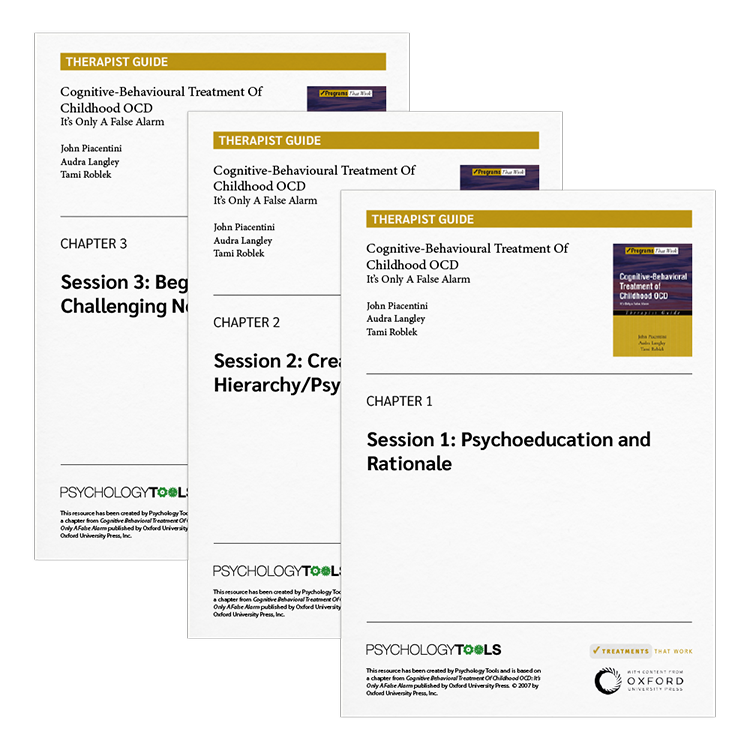
What's inside
- A structured, session-by-session treatment manual.
- Therapist checklists and progress monitoring tools.
- Detailed guidance for implementing ERP for OCD in children and young people.
- Case examples and troubleshooting tips for common challenges.
FAQs
How this resource helps improve clinical outcomes
By integrating this resource into therapy, therapists are able to:
- Deliver a structured, comprehensive treatment specifically developed for OCD in youth.
- Implement effective, evidence-based interventions.
- Help clients maintain long-term gains through relapse prevention strategies.
- Tailor treatment to meet the diverse needs of children and young people.
Clinicians who use this resource also use
References and further reading
- Piacentini, J., Langley, A., Roblek, T. (2007). Cognitive-Behavioral Treatment of Childhood OCD: It's Only a False Alarm. Oxford University Press.
- American Psychiatric Association. (2000). Diagnostic and Statistical Manual of Mental Disorders (4th ed., text rev.).
- Foa, E. B., & Kozac, M. J. (1986). Emotional processing of fear: Exposure to corrective information. Psychological Bulletin, 99, 20-35.
- March, J., Frances, A., Carpenter, D., & Kahn, D. A. (1997). Treatment of obsessive-compulsive disorder. Journal of Clinical Psychiatry, 58(Suppl 4), 2-72.
- Pediatric OCD Treatment Study Team. (2004). Cognitive-behavior therapy, sertraline, and their combination for children and adolescents with obsessive-compulsive disorder. Journal of the American Medical Association, 292, 1969-1976.
Just enter your name and email address, and we'll send you Cognitive Behavioral Treatment Of Childhood OCD: It's Only A False Alarm: Therapist Guide (English US) straight to your inbox. You'll also receive occasional product update emails wth evidence-based tools, clinical resources, and the latest psychological research.
Product
Company
Support
- © 2025 Psychology Tools. All rights reserved
- Terms & Conditions
- Privacy Policy
- Cookies Policy
- Disclaimer
Working...
We value your privacy
This site uses strictly necessary cookies to function. We do not use cookies for analytics, marketing, or tracking purposes. By clicking “OK”, you agree to the use of these essential cookies. Read our Cookie Policy
